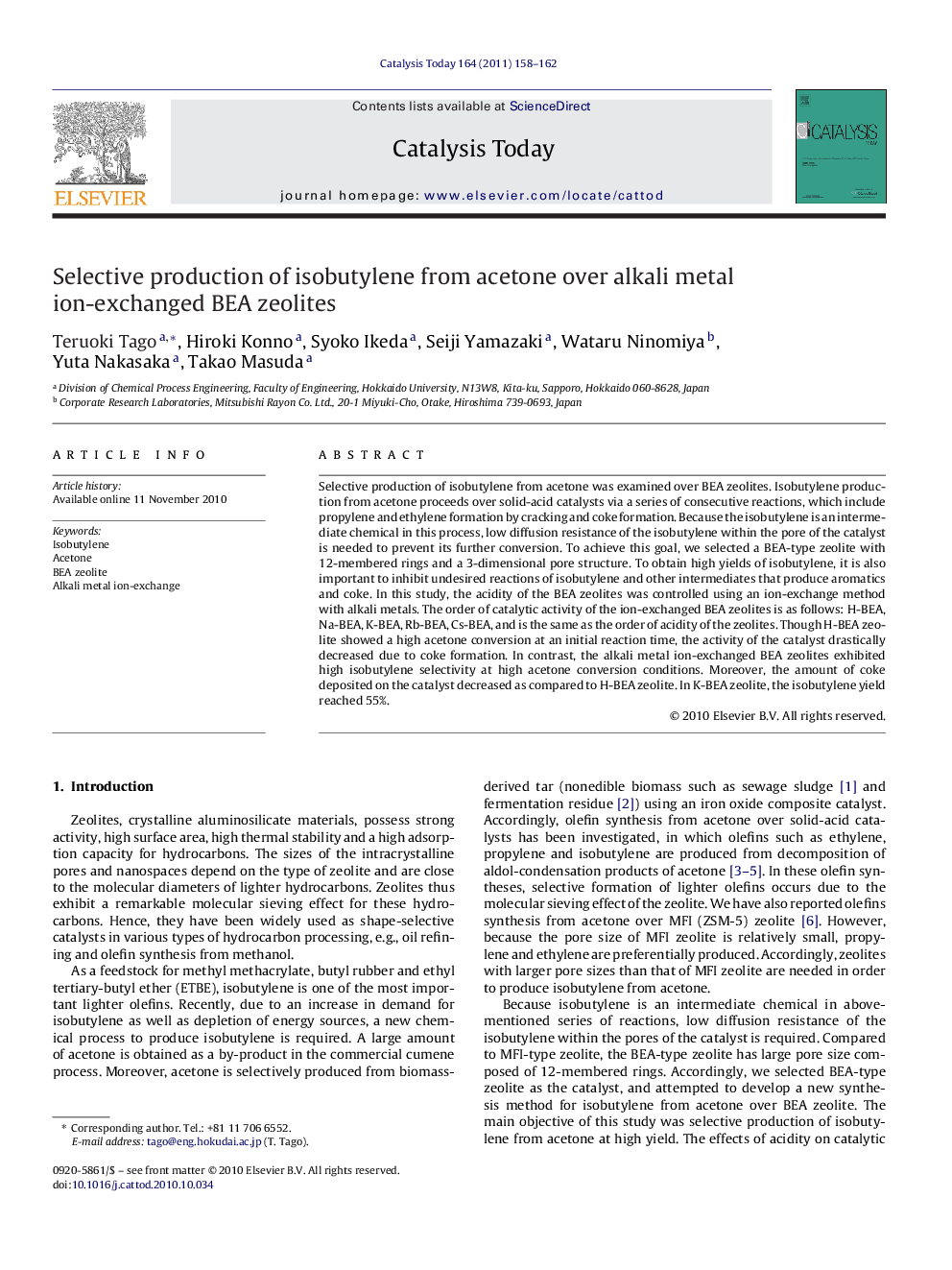| Article ID | Journal | Published Year | Pages | File Type |
|---|---|---|---|---|
| 56316 | Catalysis Today | 2011 | 5 Pages |
Selective production of isobutylene from acetone was examined over BEA zeolites. Isobutylene production from acetone proceeds over solid-acid catalysts via a series of consecutive reactions, which include propylene and ethylene formation by cracking and coke formation. Because the isobutylene is an intermediate chemical in this process, low diffusion resistance of the isobutylene within the pore of the catalyst is needed to prevent its further conversion. To achieve this goal, we selected a BEA-type zeolite with 12-membered rings and a 3-dimensional pore structure. To obtain high yields of isobutylene, it is also important to inhibit undesired reactions of isobutylene and other intermediates that produce aromatics and coke. In this study, the acidity of the BEA zeolites was controlled using an ion-exchange method with alkali metals. The order of catalytic activity of the ion-exchanged BEA zeolites is as follows: H-BEA, Na-BEA, K-BEA, Rb-BEA, Cs-BEA, and is the same as the order of acidity of the zeolites. Though H-BEA zeolite showed a high acetone conversion at an initial reaction time, the activity of the catalyst drastically decreased due to coke formation. In contrast, the alkali metal ion-exchanged BEA zeolites exhibited high isobutylene selectivity at high acetone conversion conditions. Moreover, the amount of coke deposited on the catalyst decreased as compared to H-BEA zeolite. In K-BEA zeolite, the isobutylene yield reached 55%.
